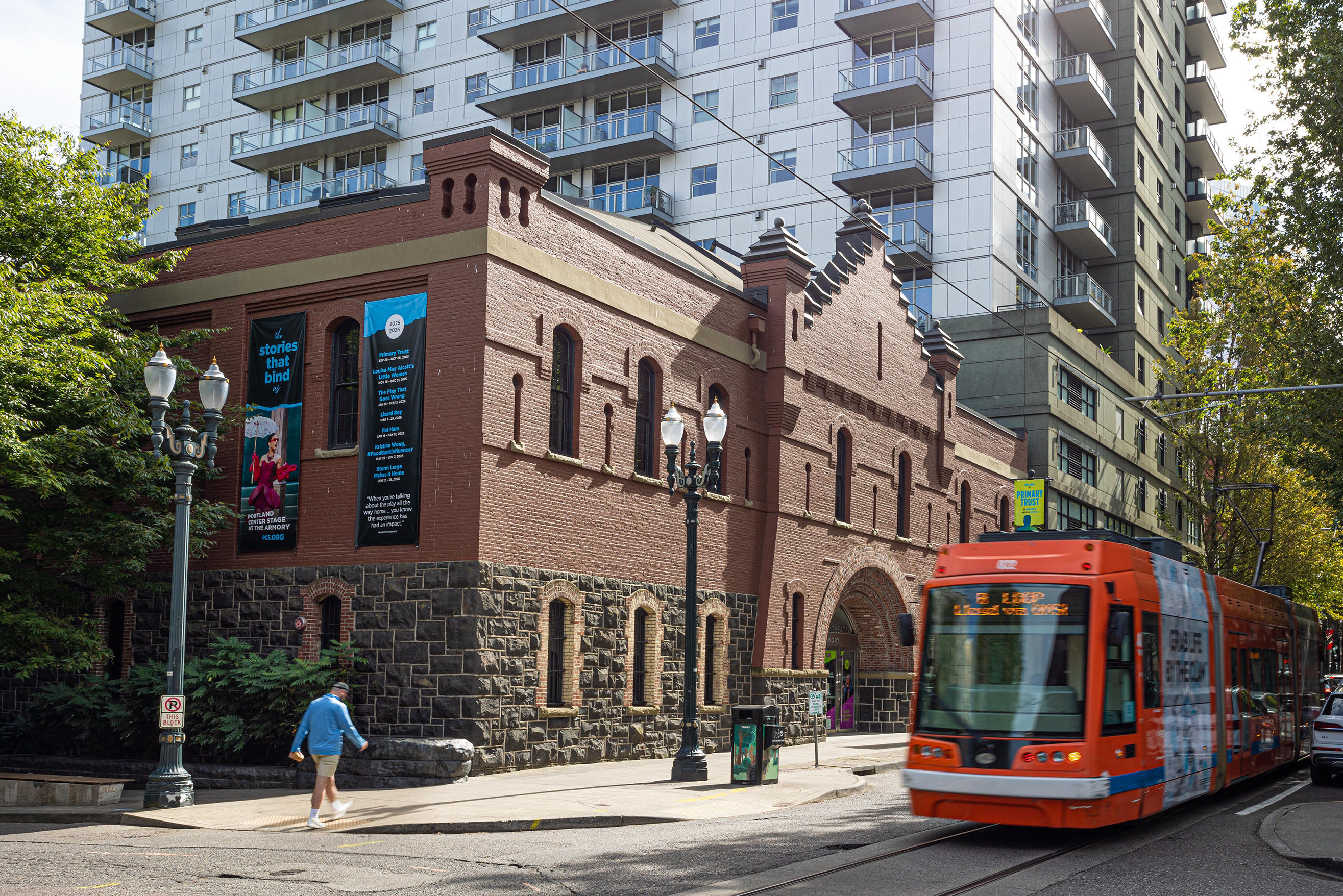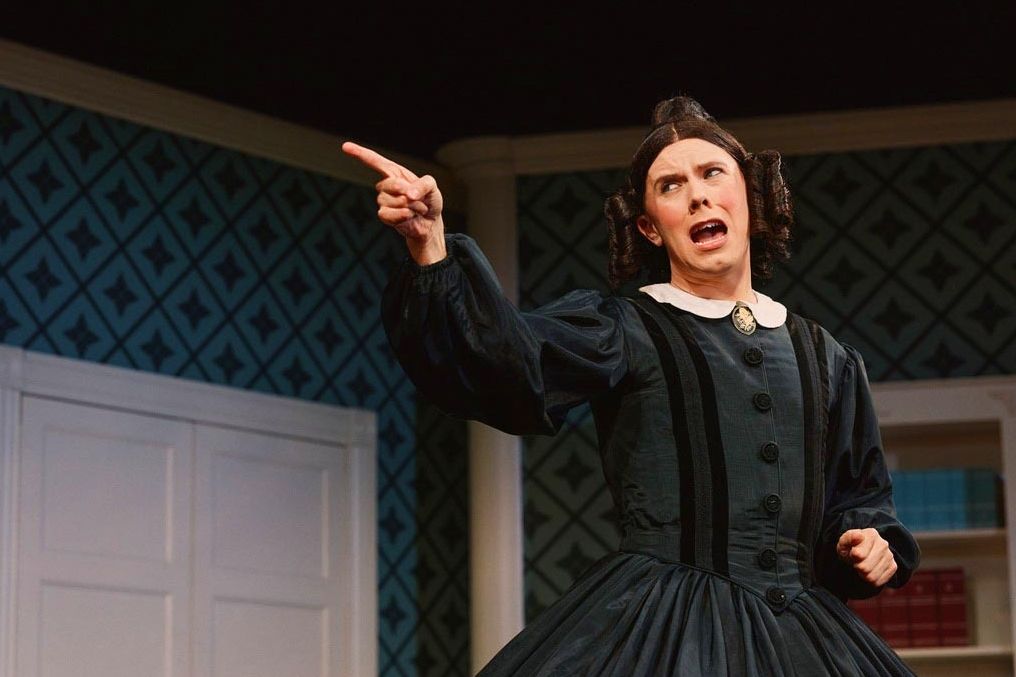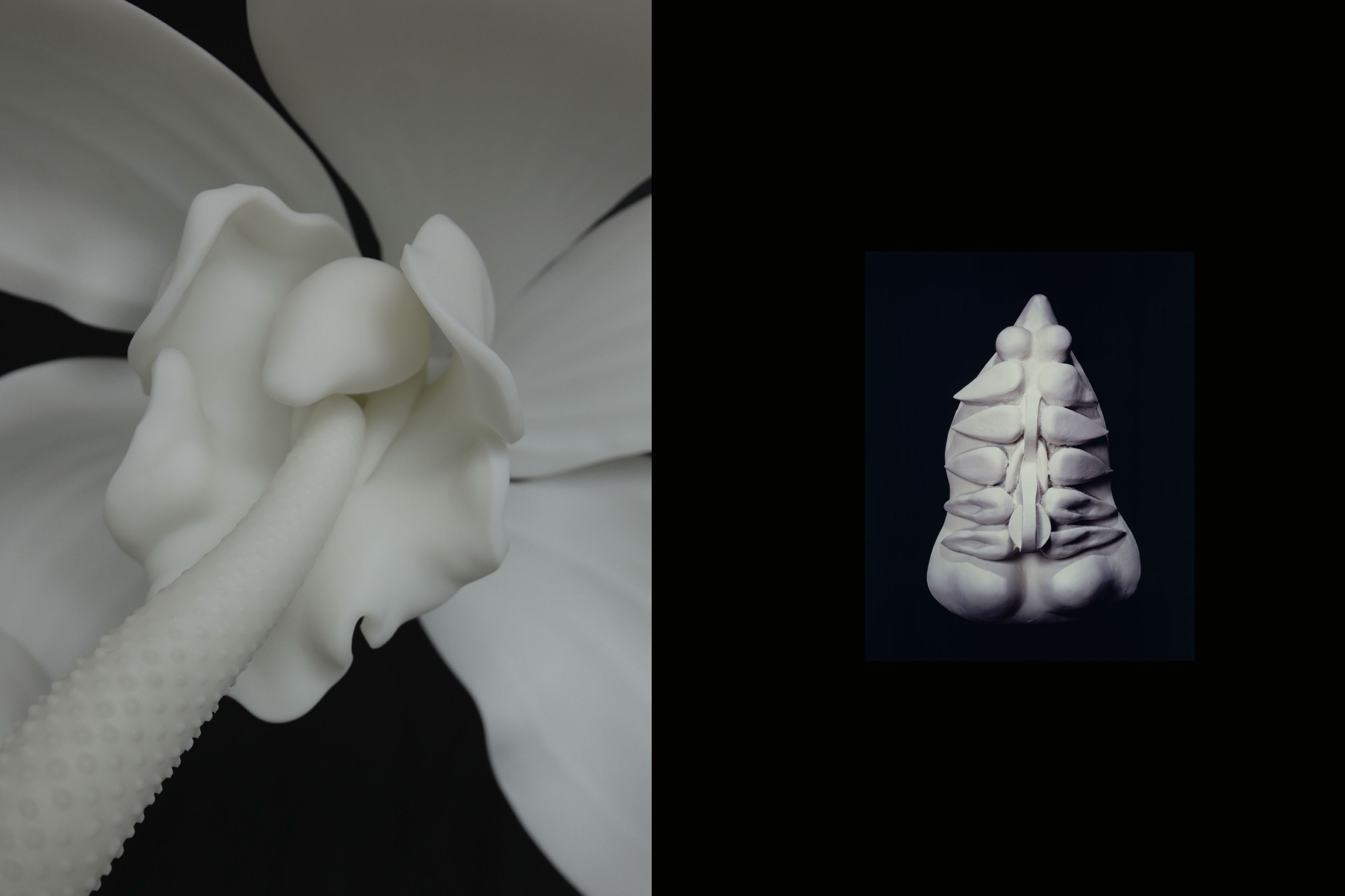Theater Review: PETE's 'Enter THE NIGHT'
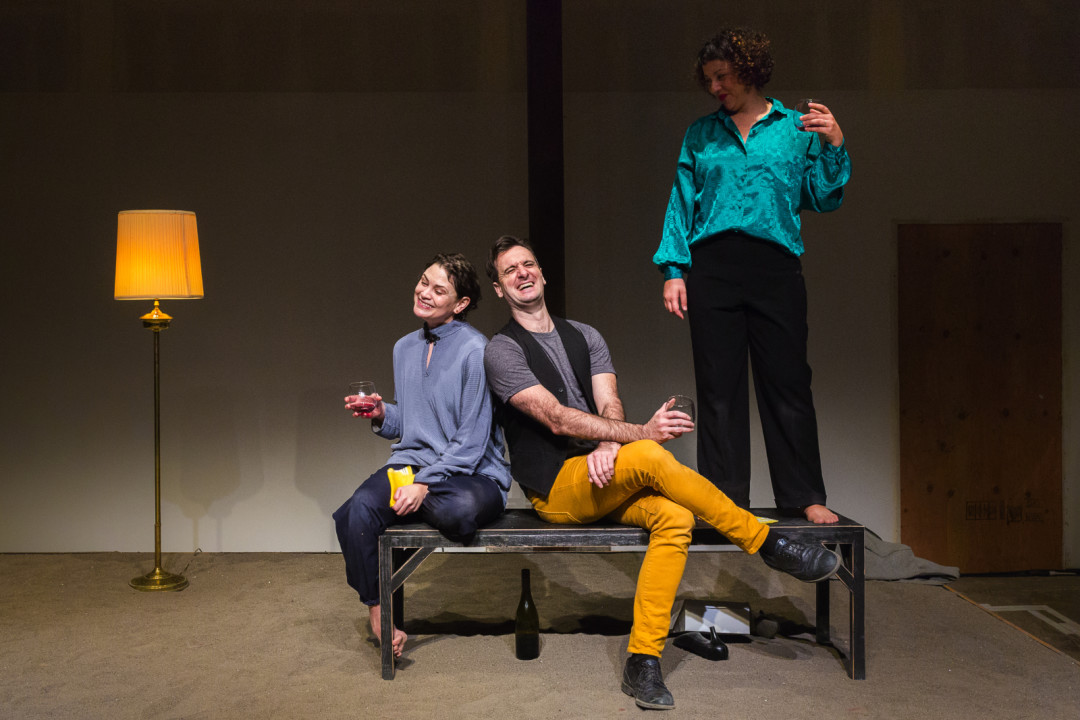
Image: Owen Carey
Slow motion is the speed of crisis: those seconds inside a car before it crashes; the replayed footage of JFKs assassination. We try to stretch the moment, collect more information, in the vain hope that we’ll find a way to change the outcome.
This sort of desperate dream-state, marked by abrupt shifts in time and tone, dominates Enter THE NIGHT, the latest production from Portland Experimental Theatre Ensemble.
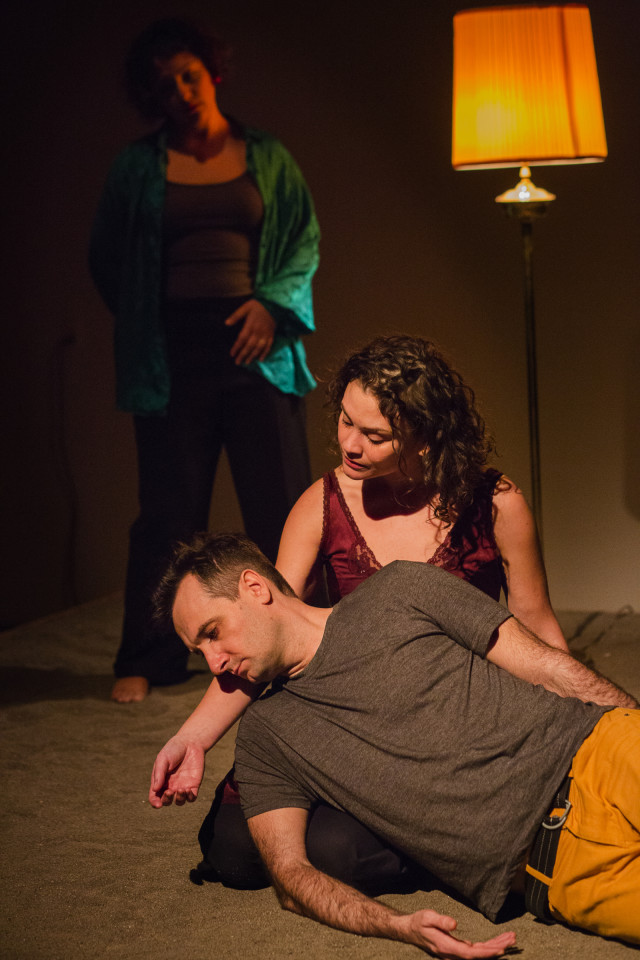
Image: Owen Carey
Written in 1993 by celebrated avant-garde playwright María Irene Fornes, PETE’s production marks just the third time Enter THE NIGHT has been staged. The plot centers on three red-wine-swilling friends—Tressa (Amber Whitehall), Paula (Cristi Miles), and Jack (Jacob Coleman)—who ping around designer Jenny Ampersand’s unique set in an onrush of personal crises (also, to perform re-enactments of the 1919 Lillian Gish silent film Broken Blossoms).
Fornes, who had won all but one of her nine Obies before penning Enter The NIGHT, began her career in the 1960s absurdist off-off Broadway movement; by the eighties she had shifted her focus to women’s experience, particularly in relation to male violence in politics, economics, and domestic life.
Enter THE NIGHT, with its aura of ambivalence, marked a clear departure for Fornes, with loss-driven monologues (on AIDS, debt-collectors, and attackers) abutting “comic” scenes that play too deliriously—and politically incorrect—to feel like relief, exactly.
The main comedic scene, a play-within-a-play written by Jack and performed by Tressa and Paula, invokes mime and minstrelsy. It’s a creepy effect accentuated by Whitehall’s disconcerting layer of white face cream (and her distractingly stilted, over-precious vocal style). Whitehall’s physical talents are on display here, as she folds herself in half, every bit a puppet, yet also very much a minstrel-like caricature.
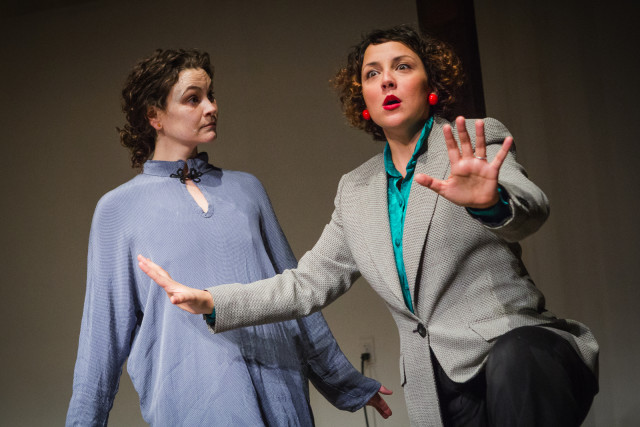
Image: Owen Carey
Deserving special mention is the set designed by Ampersand and visiting director Alice Reagan, of New York. From Fornes’s original description of a pit flanked by planks, PETE’s stage goes further with a partial layer of fern-colored sand. It shifts, it sticks, it crumbles, it resists. The sand, constantly underfoot, says a lot about Reagan’s effort to balance over-the-top drama with Fornes’s absurdist heritage.
And the takeaway? As a fuguelike exploration of identity—one rooted in 1990s feminist thought and yet still determined to poke holes in tropes from earlier decades (like racist caricature, blunt homophobia, and strictly gendered clothing)—Fornes’s script ultimately feels dated.
The crises of Enter The NIGHT aren’t behind us, of course; we are not cured of AIDS, nor endemic racial and sexual violence. But in terms of identity politics, we’ve evolved since 1993. Despite Reagan’s best efforts to shore up Fornes’s script with solid themes and bombastic imagery, there’s still not enough new information here to change the outcome: as emotionally resonant theater, Enter THE NIGHT falls short.
"Enter the Night" is showing from Jan 24-Feb 8, Thursday to Sunday at 7:30 pm at Shaking the Tree Theatre, 825 SE Grant St.
